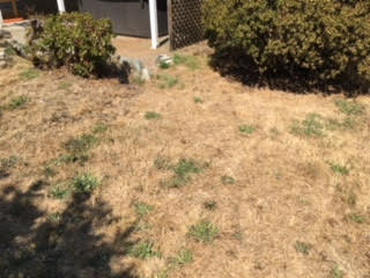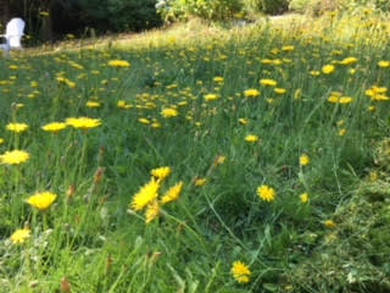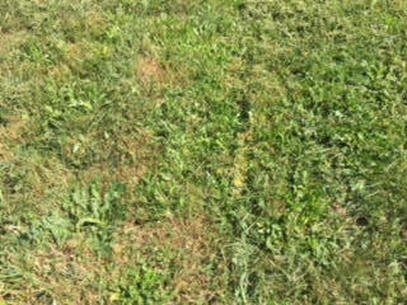How gardening best practices can be applied to management and organizational behavior. Longwood Gardens (PA) one of the most beautiful in the world Longwood Gardens (PA) one of the most beautiful in the world Gardening best practices affect landscaping behavior. As you drive through your neighborhood, the conditions of the lawns either make you feel better about yourself or question your abilities. It may be much the same when you assess the conditions of the marketplace when you size up your competition. Beautifully manicured lawns are a site to behold and the majority of the population, the status quo, wonders who has the time and resources to maintain such a high level of performance. Management best practices affect organizational behavior. Status quo does not create success.Organizations that sit atop their industry are revered in much the same way that the best garden in your neighborhood is. How do they do it? What is it about these individual and team practices that lead to such a consistently high level of organizational behavior. We revere their productivity so what can we learn from their approach that will help us improve our own systems? What do we need to do in order to compete in that same level of success? Let’s explore some of the lessons and similarities between gardening and organizational behavior. Organizational behavior: The misuse of the grass isn’t greener ideology Withering grass and under performing organizations Withering grass and under performing organizations Those in a position of leadership often lament how modern employees show no loyalty to organizations. A common phrase among short sighted leaders revolves around how employees will leave for fifty cents more to a sub-par competitor but they don’t realize, “The grass isn’t always greener on the other side.” Unfortunately the reverse isn’t true, its not as though organizations have remained distinctly loyal to their employees in a manner that would warrant reciprocal loyalty. In their book Insuring Tomorrow, Author’s Tony Canas and Carly Burnham discuss this workforce schism, “Millennials have a different definition of loyalty than previous generations did. For Millennials, loyalty means, ‘I worked very hard while I was there.” Both parties have grown to distrust each other and organizations that want to thrive will need to reinvest in means to demonstrate to their existing employees and recruits that they value performance. Organizational behavior: The cattle isn’t always fatter on the other sideOrganizations need to understand that the cattle on the other side of the fence aren’t always fatter. Leadership may think that their employees can be easily replaced, but it may be harder than they think to find good talent. Additionally, their competition may not be working with any greater talent than they are but perhaps their structure, systems and culture enable people to thrive in their areas of strength rather than focusing on their areas of weakness. Good gardening and good management practices facilitate organizational performance by working with what you have. If leadership does not want good employees leaving for marginal increases then they will need to create workplace environments that communicate greater value in the person, position and development of their team members. Leaders have to care for their gardens. Organizational behavior: The grass is greener where you water it Flowering weeds and management best practices Flowering weeds and management best practices Do you want your team to grow and thrive? You have to water it daily. Areas that you neglect in your yard become obvious rather quickly as the grass withers, flowering weeds pop up and crab grass infiltrates the landscape. Each of these conditions is a symptom of a lack of care or neglect in areas of your yard as well as your organization. Within the organization these indicators are not always as obvious, they require greater awareness of the people, processes and productivity of the team. What can we learn if we take a few of these under performing manifestations from gardening and apply them to organizational behavior? Management best practices: Withering grass within the team
Keys to change:
Management best practices: Flowering weeds within the organizationLandscaping that has flowering weeds is one that has the resources to flourish but there is a misapplication of effort and/or values. This team has resources and may well be stocked as well as staffed for success but negative behaviors are being rewarded. Greenery can be observed across the yard but it is riddled with weeds that from a distance appear to be flowers. This type of organizational behavior is common in high producing teams where structure is ignored. Cultures that are led exclusively by the numbers or results, regardless of the long term impacts are often the ones that fail to correct negative behaviors before they come back to bite them hard. Keys to change:
Management best practices: Crab grass woven into the fabric of the team Crabgrass and management best practices Crabgrass and management best practices What is the definition of crabgrass? Crabgrass (n.) a creeping grass that can become a serious weed. This may be the more difficult of the three examples to identify and resolve as symptoms such as crabgrass are rather sneaky in how they infiltrate teams. From a distance it looks like its green and healthy but up close it isn’t right. The underlying leadership issues is the failure to identify and address issues when they are small. Bad behavior isn’t being rewarded but it also isn’t being addressed and the culture is not being proactively cultivated. This could be the wrong people on the bus, to borrow concepts from Jim Collins Good to Great, meaning team members that don’t fit the vision and values (if those are even clear). It could also be that the right people are on the team but they aren’t yet in the right positions and therefore are struggling to affect change due to misplacement. Keys to change:
Average effort applied to organizational behavior will result in below average team performanceAny business today that embraces the status quo as an operating principle is going to be on a death march. – Howard Schultz, former CEO of Starbucks If you want to have a presentable (above average) yard, it does not require a great deal of effort but it does require consistency. A good yard does not require super human abilities. To cultivate a beautiful yard, you will need to make an above average effort in the system and maintain consistency. A beautiful yard does not require a wizards touch. Much of the work is in the preparation of the yard in a manner that it can be maintained. Often the difference between the results is found in the consistency of the effort. Understanding the best practices for management and organizational behavior can help you move in the right direction for the performance of your team. Above average effort applied to organizational behavior will result in above average team performanceWe cannot effect meaningful change if we become complacent, if we become comfortable with our own positions in the status quo. – Cyril Ramaphosa, president of South Africa Good leaders find enjoyment in the challenge, the process and the results. Good leaders are not super heroes they just refuse to melt into the mess of the status quo. High performing organizations are not unicorns, they are composed of teams of people who take pride in performance and rise to the challenge of their competitive environment. There is no myth or mystery to consistently building towards high performance as an organization, it takes a lot of hard work. The tools for success include vision guiding effort, values directing productivity and consistency in the collective contributions of the team to reach the goals of the organization. IZ Ventures - more than business coaching and consulting, we help you connect, collaborate and conquer.
0 Comments
|
AuthorThoughts on personal and professional development. Jon Isaacson, The Intentional Restorer, is a contractor, author, and host of The DYOJO Podcast. The goal of The DYOJO is to help growth-minded restoration professionals shorten their DANG learning curve for personal and professional development. You can watch The DYOJO Podcast on YouTube on Thursdays or listen on your favorite podcast platform.
Archives
March 2023
Categories
All
<script type="text/javascript" src="//downloads.mailchimp.com/js/signup-forms/popup/unique-methods/embed.js" data-dojo-config="usePlainJson: true, isDebug: false"></script><script type="text/javascript">window.dojoRequire(["mojo/signup-forms/Loader"], function(L) { L.start({"baseUrl":"mc.us5.list-manage.com","uuid":"b9016446bd3c6a9f0bd835d4e","lid":"83282ffb9e","uniqueMethods":true}) })</script>
|
Jon Isaacson |
Connect. Collaborate. Conquer.
© COPYRIGHT 2015. ALL RIGHTS RESERVED.
|



 RSS Feed
RSS Feed